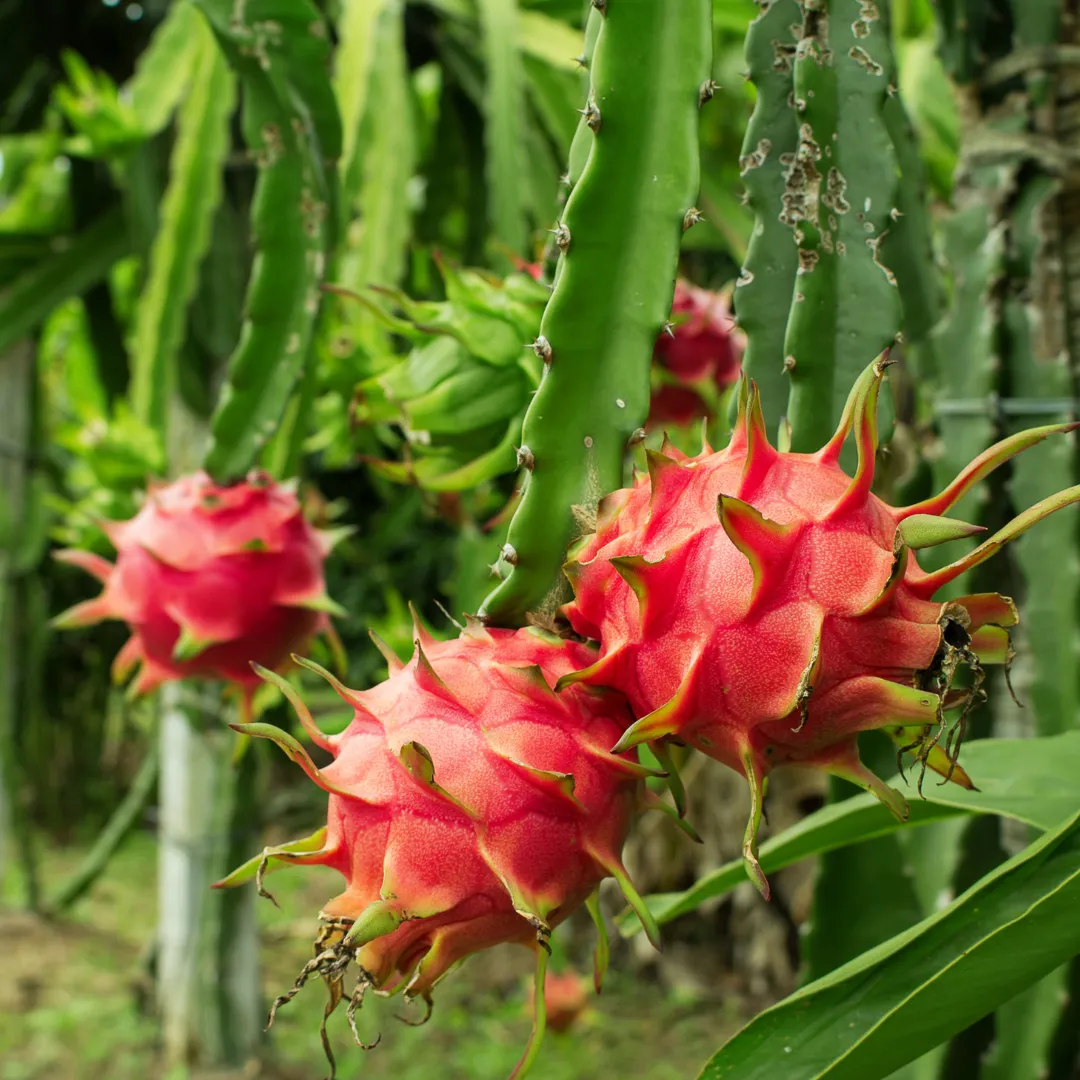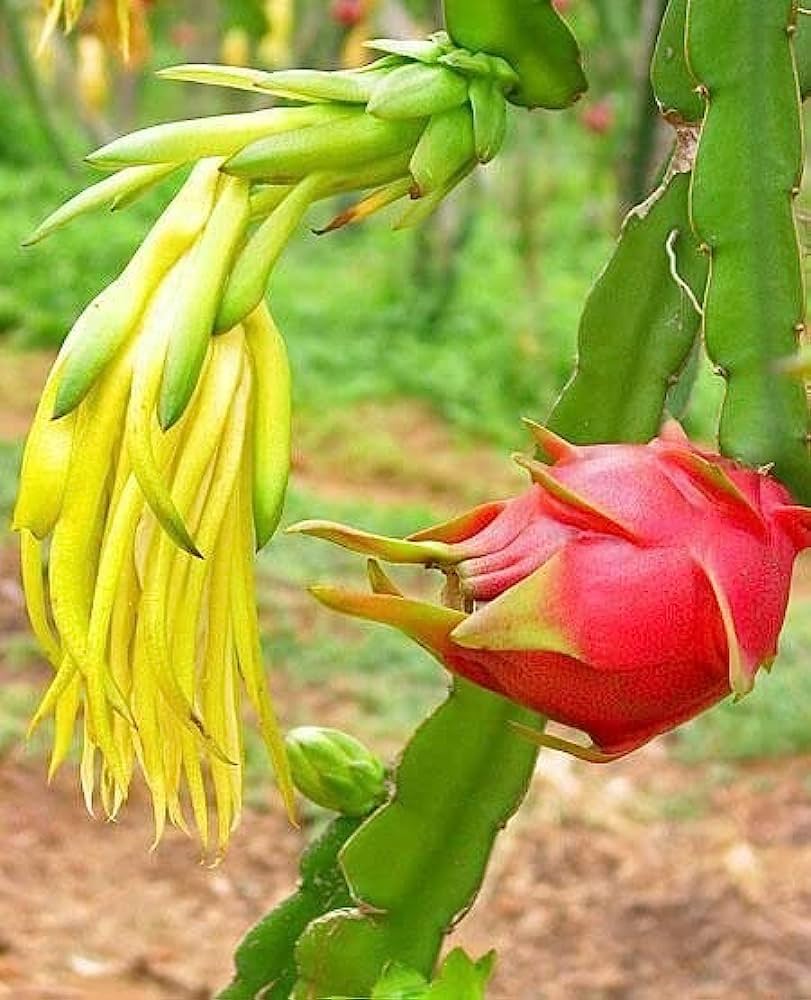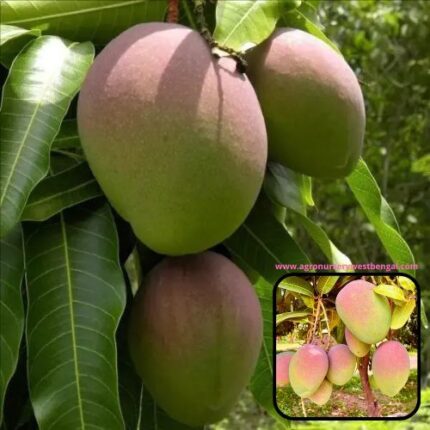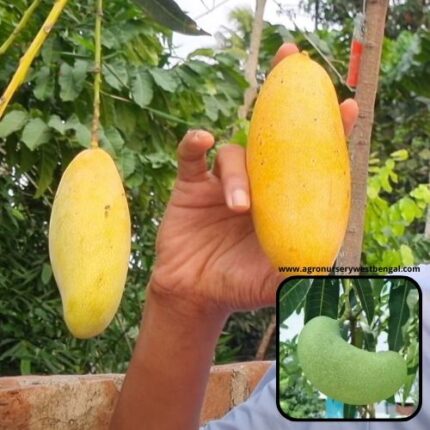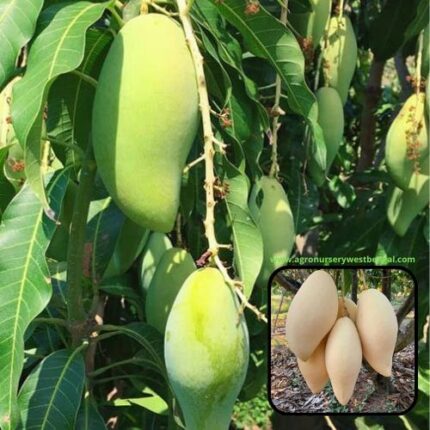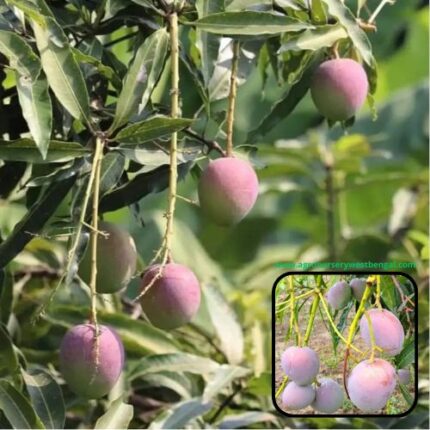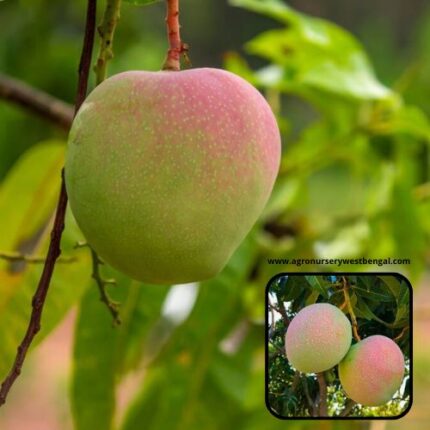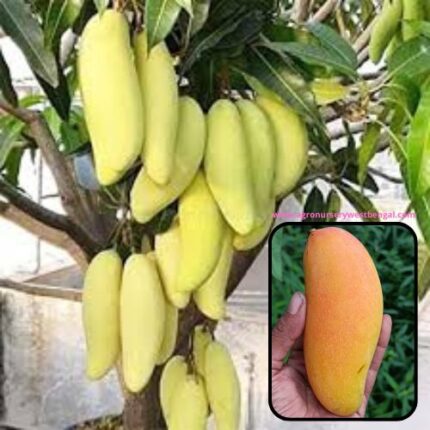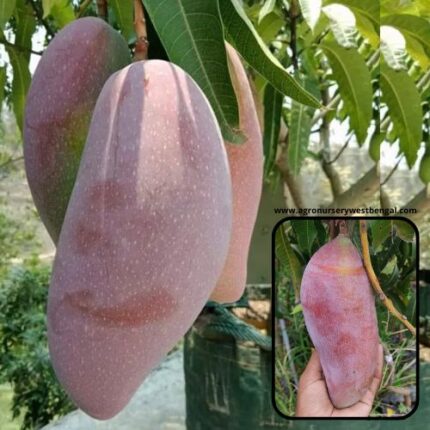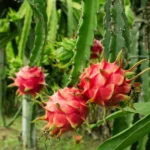

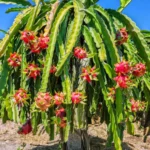
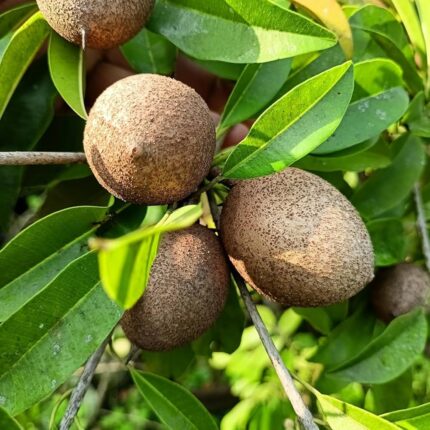
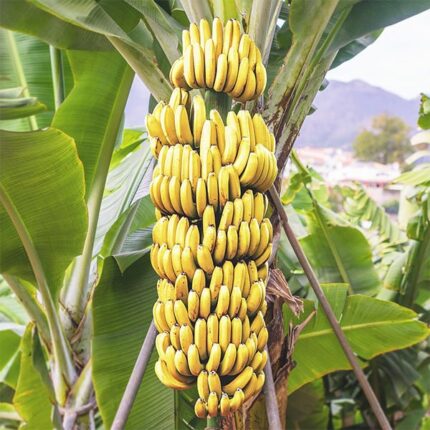
Red Dragon fruit plants
₹499 Original price was: ₹499.₹299Current price is: ₹299.
“Red Dragon Fruit” primarily refers to varieties of dragon fruit that have bright pink or red skin and a vibrant red, magenta, or deep purple flesh. While the most common dragon fruit (often seen in supermarkets) has pink skin and white flesh, the red-fleshed varieties are highly sought after for their striking color and often richer flavor.
Here’s a detailed description of Red Dragon Fruit:
The Fruit:
- Appearance (Exterior): The most striking feature is its vivid, often shocking, bright pink to crimson red skin. This skin is adorned with characteristic green, slightly fleshy, scale-like appendages or “fins” that give the fruit its “dragon” moniker. The overall shape is typically oval or oblong.
- Appearance (Interior): When cut open, the flesh is a stunning, intense shade of red, magenta, or deep purple. This vibrant color is due to pigments called betalains, which are powerful antioxidants. The flesh is generously speckled with numerous tiny, edible, black seeds, similar in appearance to those found in a kiwi.
- Taste: Compared to the white-fleshed varieties, red dragon fruit generally has a sweeter and more pronounced flavor. It’s often described as a mild, sweet, and subtly earthy taste, a blend of flavors reminiscent of kiwi, pear, and watermelon, sometimes with berry or even citrusy notes. The sweetness level can vary between specific red-fleshed cultivars.
- Texture: The flesh is soft, juicy, and somewhat creamy, yet simultaneously has a pleasant crunch from the tiny black seeds. It’s often compared to the texture of a ripe kiwi or a soft pear.
- Ripeness: To identify a ripe red dragon fruit, look for skin that is vibrantly colored, bright, and evenly colored. The scales should be well-defined and still have some green tips. Gently press the fruit; it should yield slightly to pressure, similar to a ripe avocado, but should not be mushy. Avoid fruits with too many dark spots, blemishes, or a shriveled stem, which indicate overripeness. A mild, sweet aroma can also be a sign of ripeness.
- Staining: Be aware that the strong pigments in red dragon fruit can easily stain hands, cutting boards, and clothing.
The Plant (Hylocereus species, primarily H. costaricensis / Selenicereus costaricensis and some H. polyrhizus varieties):
- Growth Habit: Dragon fruit plants are actually climbing cacti. They are sprawling or vining epiphytes, meaning they often grow on other plants or structures, using aerial roots to cling. They can reach significant lengths, with long, fleshy, segmented stems that are typically three-ribbed.
- Flowers: The plant produces spectacular, large (up to 30 cm long and 23 cm wide), creamy-white flowers that are often referred to as “Queen of the Night” or “Moonflowers” because they typically bloom only at night and often last for just one night. These nocturnal blooms are often highly fragrant and attract bats and moths for pollination.
- Hardiness: Dragon fruit plants thrive in hot, tropical, and subtropical climates. They are quite hardy and can tolerate a range of soil types as long as they are well-drained. They require full sun for optimal fruit production.
- Fruiting: Once pollinated, the flowers quickly develop into fruit, typically ripening within 25-45 days after flowering. A mature plant can produce multiple flushes of fruit throughout the year in suitable climates.
Uses and Benefits:
- Fresh Consumption: Red dragon fruit is most commonly enjoyed fresh, simply cut in half and scooped out with a spoon. Its vibrant color makes it a popular addition to fruit salads and platters.
- Culinary Uses: It’s widely used in smoothies, juices, desserts, sorbets, jams, and as a natural food coloring due to its intense pigment.
- Nutritional Value: Red dragon fruit is considered a superfood, packed with:
- Vitamin C: Boosting immunity.
- Fiber: Excellent for digestive health and regularity.
- Antioxidants: Especially betalains (which give it its red color), flavonoids, and phenolic acid, which help combat free radicals and reduce inflammation.
- Minerals: Including iron (beneficial for blood), magnesium (for bones and muscles), and calcium.
- Omega Fatty Acids: The tiny black seeds are a good source of omega-3 and omega-9 fatty acids.
- Health Benefits: Supports immunity, improves digestion, promotes heart health, aids in blood sugar regulation, provides anti-inflammatory benefits, and contributes to healthy skin.
The red dragon fruit is not just a treat for the taste buds but also a feast for the eyes, making it a popular and nutritious choice in tropical fruit markets

